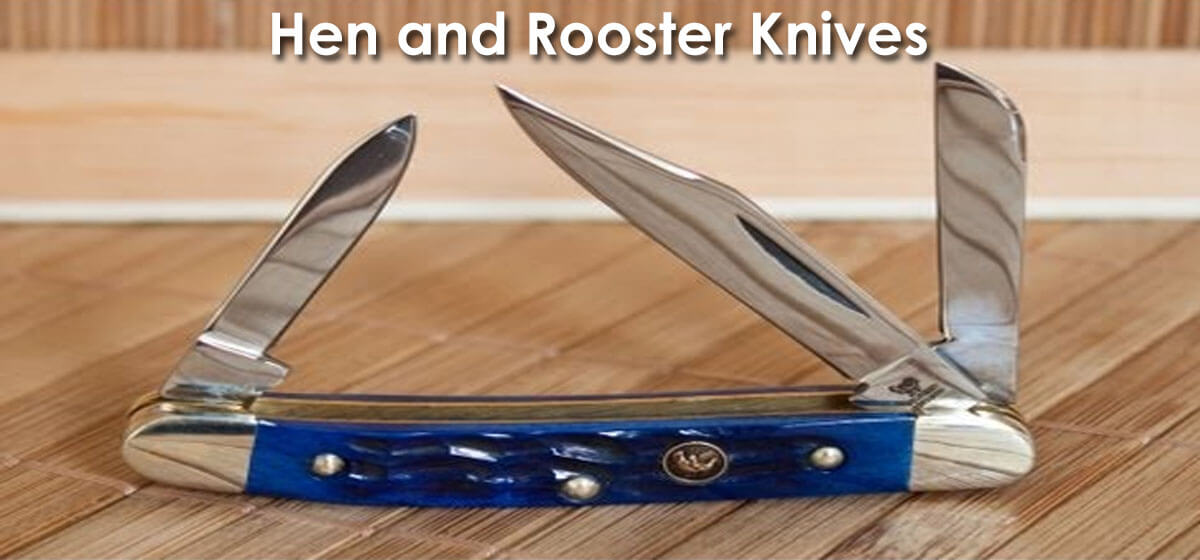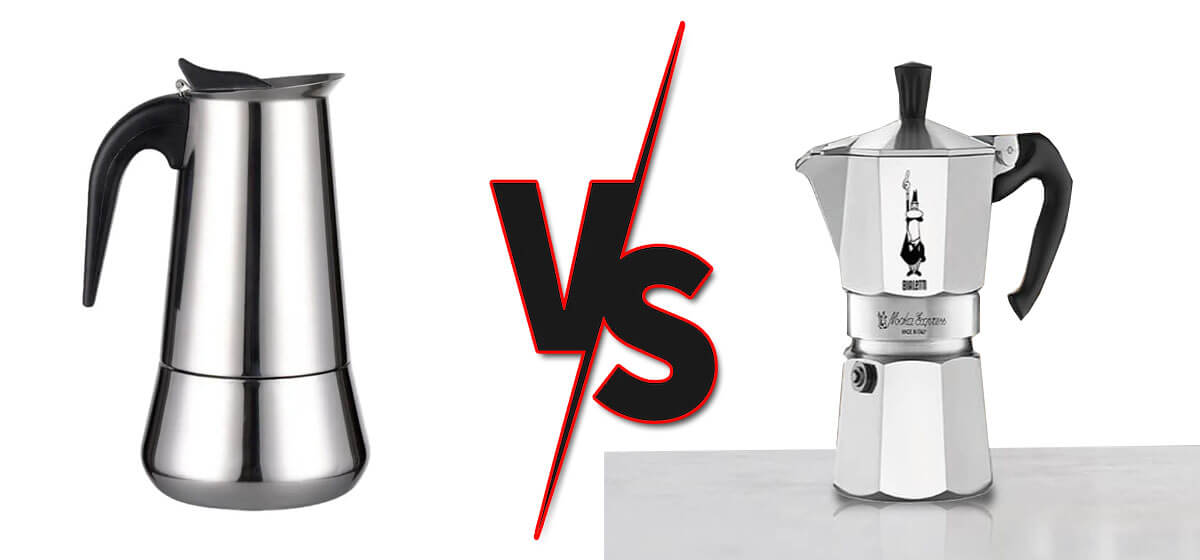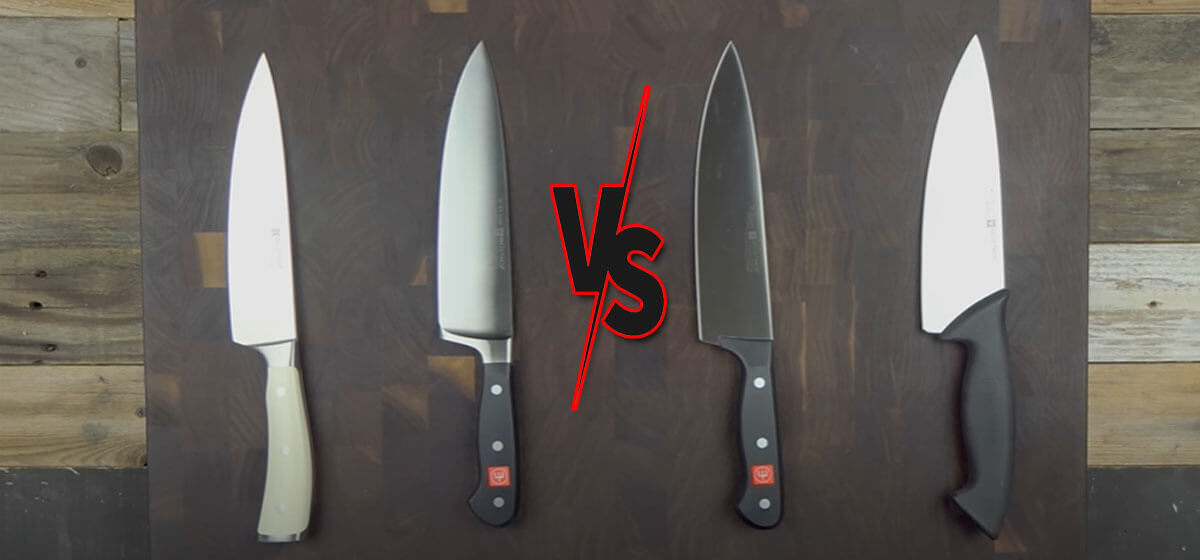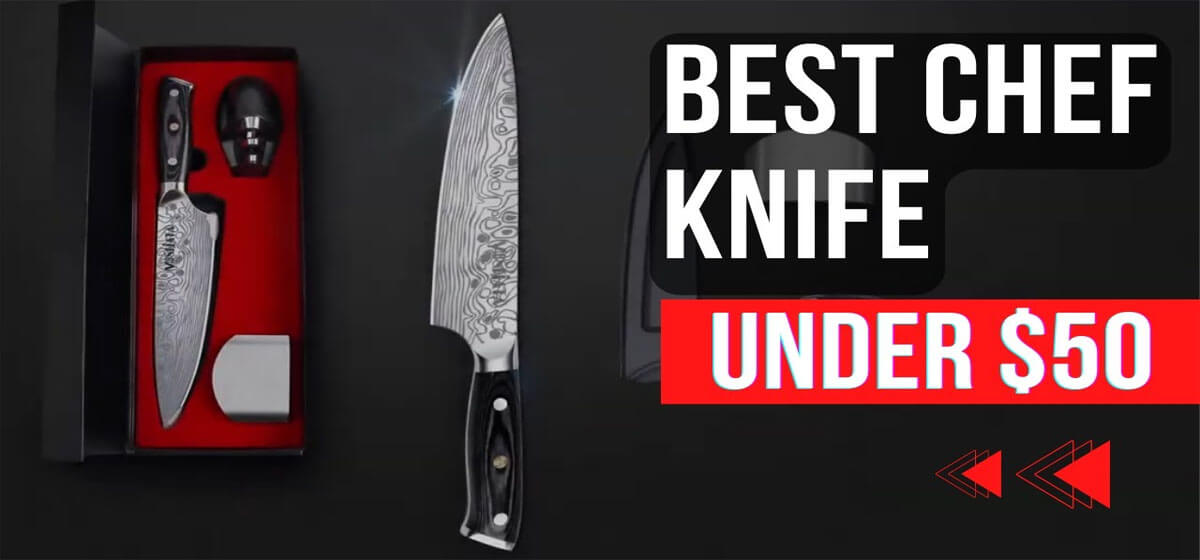How to Date Hen And Rooster Knives

As an Amazon Associate I earn from qualifying purchases.
To date Hen and Rooster knives, you can look for markings on their tangs like many other knives. These markings can provide information about the age and production period of the knife.
The process of dating Hen and Rooster knives is similar to dating other knives with tang stamps. Hen and Rooster knives have a rich history and are known for their high-quality craftsmanship. The company is synonymous with superior workmanship and has been manufacturing knives with over two hundred hand operations.
While the original knives were not marked with the Hen and Rooster logo, newer models now bear the logo. It’s important to note that not all Hen and Rooster knives are produced in Solingen, Germany, where the brand originated. Some models are made in Spain or other countries. With their unique markings and attention to detail, Hen and Rooster knives continue to be a sought-after choice for collectors and knife enthusiasts.
Crafting Legacy And Brand History
Looking to date your Hen and Rooster knives? Discover the rich history and craftsmanship behind each piece, allowing you to date them accurately based on unique markings and tangs. Explore the world of Hen and Rooster knives and unlock the legacy and brand history.
Birthplace Of The Hen And Rooster Brand
The Hen and Rooster brand originates from Austin, Texas, United States. Renowned for its high-grade cutlery and superior workmanship, each and every Hen and Rooster knife is a testament to the tradition of excellence that the brand has upheld for decades. From its humble beginnings in this vibrant city, the Hen and Rooster legacy was born.
Evolution Of Knife-making Techniques Over Time
Throughout its history, Hen and Rooster has embraced technological advancements and evolving knife-making techniques to ensure the production of exceptional knives. As a result, every knife exudes fine craftsmanship and intricate details that are a testament to the brand’s commitment to quality. From traditional carbon steel blades to more modern stainless steel varieties, Hen and Rooster knives have adapted to suit the changing needs and preferences of knife enthusiasts worldwide.
Unique Markings On The Tangs
When it comes to dating Hen and Rooster knives, identifying the unique markings on the tangs is essential. These markings provide valuable insights into the age and authenticity of each knife. Through extensive research and analysis of tang stamps, collectors and enthusiasts can determine the approximate manufacturing period of a Hen and Rooster knife. Tang stamp charts and information available on trusted platforms such as “All About Pocket Knives” can greatly aid in decoding these markings and understanding the knife’s history.
To further determine the age of a Hen and Rooster knife, expert collectors recommend examining additional factors such as the absence or presence of a shield and specific characteristics like odd markings or etchings on master blades. These details not only add to the uniqueness of each knife but also provide valuable clues for dating purposes. Therefore, it is crucial for enthusiasts to pay close attention to these distinguishing features during their evaluation.
In conclusion, the legacy and brand history of Hen and Rooster knives are deeply rooted in crafting excellence and dedication to quality. By understanding the birthplace of the brand, the evolution of knife-making techniques, and the significance of unique markings on tangs, collectors and enthusiasts can embark on an exciting journey of dating and appreciating these exceptional knives.
Deciphering Blade Markings
When it comes to dating Hen And Rooster knives, deciphering the blade markings becomes crucial. These markings often contain important symbols and numbers that hold significant meaning for collectors and enthusiasts. Understanding the significance of these symbols and numbers can help you determine the age and authenticity of a Hen And Rooster knife.
Tang stamps are another important aspect of dating Hen And Rooster knives. Tang stamps are markings found on the tang, which is the metal portion of the blade that extends into the handle. These stamps often include information about the manufacturer, the production year, and sometimes even the location of production. By familiarizing yourself with the different variations of tang stamps used by Hen And Rooster, you can gain insight into the knife’s history and narrow down its age.
To make the process easier, you can refer to the Tang Stamps Charts provided by All About Pocket Knives and the Hen And Rooster information page on their website. These resources offer detailed information on the various tang stamps used by Hen And Rooster over the years.
It’s important to note that tang stamps can vary depending on the specific model or series of the Hen And Rooster knife. Some models may have unique tang stamps that are specific to that particular line. Therefore, it’s essential to research and compare the tang stamps of your knife to known examples or reference materials to ensure accuracy in dating.
Deciphering blade markings, including symbols and numbers, as well as understanding tang stamps variations, is crucial in accurately dating Hen And Rooster knives. By familiarizing yourself with the significance of these markings and utilizing available resources, you can confidently determine the age and authenticity of your Hen And Rooster knife.
Spotting Manufacturing Clues
When it comes to dating Hen and Rooster knives, one important aspect is to look for manufacturing clues. These clues can help you determine the age, construction materials used, and even the evolution of handle designs. By examining the knife’s tang stamp, shield, and other markings, you can gather valuable information about the knife’s history and production.
Identifying Construction Material Changes
One of the key factors in dating Hen and Rooster knives is understanding the changes in construction materials over time. As the company evolved and adapted to new manufacturing methods, they often switched materials. By spotting these changes, you can approximate the knife’s age and even its value. Let’s take a look at some of the materials commonly used and the periods they were prevalent:
| Material | Period |
|---|---|
| Carbon steel | Early to mid-20th century |
| Stainless steel | Mid-20th century onwards |
| High-carbon stainless steel | Recent decades |
By examining the blade’s material and comparing it to the timeline, you can get a better understanding of when the knife was likely manufactured. This can be especially useful when you come across knives without any explicit date markings.
Evolution Of Handle Designs
Another fascinating aspect of dating Hen and Rooster knives is observing the evolution of handle designs. Over the years, Hen and Rooster introduced various handle styles, each reflecting the trends and preferences of the time. By identifying these changes, you can narrow down the knife’s production era and appreciate the craftsmanship behind each design.
Some common handle design features to look out for include:
- Natural materials like bone, wood, or stag
- Stacked leather handles
- Synthetic materials like acrylic or G-10
- Inlay patterns and decorative elements
By examining these design features, you can gather insights into the knife’s age and even the specific series or line it belongs to. Keep in mind that newer knife models may incorporate a combination of traditional and modern handle materials, showing the company’s commitment to blending tradition and innovation.
Overall, spotting manufacturing clues is an exciting aspect of dating Hen and Rooster knives. By paying attention to construction material changes and handle design evolution, you can unlock the historical value and craftsmanship behind each knife.
Using Catalogs And Guides
When it comes to dating Hen And Rooster Knives, catalogs and guides can be valuable resources. By carefully examining the markings on the tangs, collectors can determine the age and authenticity of these knives.
Importance Of Knife Catalogs In Dating
When it comes to dating Hen and Rooster knives, catalogs play a vital role in providing valuable information. Knife catalogs act as a treasure trove of knowledge, featuring detailed descriptions, images, and historical data about different knife models and their production timelines.
By referring to these catalogs, collectors can gain insight into the various design changes and markings used by Hen and Rooster over the years. This allows them to identify specific patterns, tang stamps, or shield variations that can help determine the age and authenticity of a knife.
Furthermore, knife catalogs often include pricing information, which can be useful in understanding the market value of a particular knife model. Collectors can compare the pricing listed in catalogs to current market trends, giving them a better understanding of the knife’s worth.
How Collectors’ Guides Aid The Process
In addition to knife catalogs, collectors’ guides play a crucial role in dating Hen and Rooster knives. These guides are comprehensive references that provide detailed information about different knife brands, including Hen and Rooster.
Collectors’ guides offer in-depth analysis of Hen and Rooster knife patterns, tang stamps, and shield variations, helping enthusiasts identify and date their knives accurately. They often provide photographs and illustrations that assist in visual identification.
These guides may also include expert tips and techniques for dating Hen and Rooster knives. They outline specific details to look for, such as certain blade markings or handle materials that indicate a knife’s age or production period.
Moreover, collectors’ guides allow knife enthusiasts to connect with a community of fellow collectors. Online forums and discussion boards are often referenced within these guides, offering a platform to share knowledge, exchange information, and seek assistance when dating a particular knife.
By utilizing both knife catalogs and collectors’ guides, dating Hen and Rooster knives becomes a more accessible and accurate process. Collectors can rely on the wealth of information provided in these resources, enabling them to confidently determine the age and value of their cherished knives.
Discovering Forums And Communities
Discovering forums and communities is a great way to learn how to date Hen and Rooster knives. By exploring online platforms, you can find valuable information and expert advice on deciphering the markings and identifying the age of these knives.
Networking With Collectors
One great way to immerse yourself in the world of Hen and Rooster knives is to network with other collectors who share your passion. By joining forums and communities dedicated to knife collecting, you can connect with like-minded individuals who can offer valuable insights and advice.
Sharing Knowledge And Information Online
When it comes to dating Hen and Rooster knives, sharing knowledge and information online can be immensely helpful. Forums and communities provide an excellent platform for collectors to exchange valuable information about the history, markings, and characteristics of these knives.
In these online spaces, you can find expert opinions, photos, and even access specialized resources like tang stamps charts, which are indispensable when attempting to date Hen and Rooster knives accurately. By engaging with these communities and actively participating in discussions, you can expand your knowledge and learn from others.
Detecting Fakes And Replicas
When it comes to collecting knives, especially vintage ones like Hen And Rooster knives, it’s important to be able to differentiate between genuine pieces and fakes or replicas. As with any sought-after item, counterfeit versions of these knives have found their way into the market. To ensure you’re getting an authentic Hen And Rooster knife, it’s essential to know how to detect fakes and replicas. This section will highlight common characteristics of counterfeits and provide tips on testing knife authenticity.
Common Characteristics Of Counterfeits
Counterfeit Hen And Rooster knives often exhibit certain tell-tale signs that can help you identify them. By familiarizing yourself with these common characteristics, you can become more confident in spotting fake or replica knives:
- Poor craftsmanship:
Counterfeit knives may display inferior quality workmanship compared to the genuine ones. Look for uneven edges, visible seams, or sloppy finish.
- Incorrect markings:
Authentic Hen And Rooster knives often have distinct and specific markings. Counterfeit versions may inaccurately replicate these markings or feature inconsistent or misspelled logos, tang stamps, or model numbers.
- Low-quality materials:
Counterfeit knives may utilize cheaper materials that do not match the original quality standards of Hen And Rooster. Pay attention to the quality of the blade, handle, and any additional components.
- Unfamiliar designs:
Counterfeit knives might feature designs or patterns that do not match the known designs of Hen And Rooster. Be wary of knives that deviate from the brand’s usual aesthetic.
- Lack of original packaging:
Authentic Hen And Rooster knives often come with original packaging, including boxes, sheaths, or pouches. Counterfeit knives may be sold without any packaging or have generic or poorly made packaging.
Testing Knife Authenticity
While observing the common characteristics mentioned above can be helpful, there are additional steps you can take to verify the authenticity of a Hen And Rooster knife:
- Research and compare:
Before purchasing a Hen And Rooster knife, research the specific model and its details. Look for official images and descriptions provided by the brand. Compare these details with the knife you’re considering to ensure they align.
- Inspect tang stamps:
Examine the tang stamp on the knife’s blade carefully. Authentic Hen And Rooster knives have specific and consistent tang stamps. Familiarize yourself with these markings and compare them to the one on the knife you’re examining.
- Consult experts or collectors:
If you’re unsure about the authenticity of a Hen And Rooster knife, seek advice from knowledgeable collectors or experts in the field. Online communities and forums dedicated to knife collecting can be valuable resources for getting expert opinions.
- Acquire documentation:
If possible, try to obtain any documentation or certificates of authenticity that may accompany the knife. Genuine Hen And Rooster knives may have such documents, while counterfeit versions are unlikely to.
- Purchase from reputable sources:
To minimize the risk of buying a fake or replica knife, make your purchases from trusted and reputable sellers. Official Hen And Rooster dealers or established knife dealers specializing in vintage items are generally more reliable sources.
By being vigilant, conducting thorough research, and following these tips, you can increase your chances of distinguishing genuine Hen And Rooster knives from fakes or replicas. Remember, knowledge is your greatest weapon in the world of knife collecting.
Maintenance For Longevity
To ensure the longevity of your Hen and Rooster knives, it is important to know how to properly date them. By studying the markings on the tang of the knives, you can determine their age and value. Take the time to learn this process and maintain your knives for years to come.
Best Practices For Storage
Proper storage is essential for maintaining the longevity of your Hen And Rooster knives. Follow these best practices to ensure your blades are protected:
- Store your knives in a dry and well-ventilated area to prevent moisture from causing rust or corrosion.
- Avoid storing your knives in direct sunlight or extreme temperature conditions, as this can damage the handles and affect the blade’s performance.
- Consider using a knife block, knife magnet, or blade guards to keep your knives organized and protected.
- Ensure your knives are stored separately to prevent them from clashing or rubbing against each other, which can cause scratches or dullness.
Cleaning And Handling Tips
Proper cleaning and handling are crucial for maintaining the performance and appearance of your Hen And Rooster knives. Follow these tips to keep your blades in top condition:
- Clean your knives after each use to remove any food particles or residue. Use warm water, mild dish soap, and a soft sponge or cloth to gently wipe the blade and handle.
- Dry your knives thoroughly with a clean towel to prevent water spots or rust formation. Avoid air drying, as moisture can still be present. Avoid using abrasive cleaners, harsh chemicals, or scrubbing pads, as they can damage the blade’s finish and handle materials.
- Never soak your knives or leave them submerged in water, as this can lead to handle damage and affect the blade’s sharpness.
- Handle your knives with care, avoiding excessive force or twisting motions that can cause the blade to bend or chip.
- When storing your knives, use blade guards or protective sheaths to prevent accidental cuts and keep the edge sharp.
By following these maintenance practices, you can ensure that your Hen And Rooster knives remain in excellent condition for years to come. Remember, proper storage, regular cleaning, and gentle handling are the keys to preserving the longevity of your beloved blades.
Expanding Your Knife Repertoire
When it comes to expanding your knife collection, Hen And Rooster knives offer a unique blend of quality craftsmanship and historical significance. Dating back to their beginnings in Solingen, Germany, these knives are known for their classic markings and exceptional workmanship. In this article, we will explore how to assess the value and potential of Hen And Rooster knives, as well as where to find vintage pieces to add to your collection.
Where To Find Vintage Pieces
If you’re interested in adding vintage Hen And Rooster knives to your collection, there are several avenues you can explore:
- Online marketplaces: Websites like eBay and Etsy often have a wide selection of vintage knives available for purchase. Make sure to carefully read the product descriptions and examine the provided photos to ensure the authenticity and condition of the knives.
- Auctions: Attend local auctions or explore online auction platforms to find unique vintage Hen And Rooster knives. Auctions can be an exciting way to acquire rare and collectible pieces, but be prepared to bid competitively.
- Knife shows and expos: Check out knife shows and expos in your area, as they often have vendors specializing in vintage knives. This gives you the opportunity to browse a variety of options and speak directly with knowledgeable sellers.
Assessing The Value And Potential Of Knives
When assessing the value and potential of Hen And Rooster knives, it’s important to consider the following factors:
- Condition: Examine the overall condition of the knife, including the blade, handle, and any additional features. Look for signs of wear, damage, or restoration. Knives in excellent condition will generally command a higher value.
- Authenticity: Research the specific markings and trademarks associated with Hen And Rooster knives. Look for consistent and accurate details, such as the presence of a shield on the handle or specific tang stamps. Refer to online resources and expert opinions to verify the authenticity of the knife.
- Rarity: Certain models or variations of Hen And Rooster knives may be rarer than others, increasing their value to collectors. Consider the availability and scarcity of the particular knife you are interested in.
- Historical significance: Hen And Rooster knives have a rich history, so it’s worth exploring the background and story behind the specific model or era you are considering. Understanding the historical context can add depth and value to your knife collection.
By carefully assessing these factors, you can make informed decisions when adding Hen And Rooster knives to your collection. Whether you are a seasoned collector or just starting out, expanding your knife repertoire with these timeless pieces can be a rewarding experience.
Frequently Asked Questions For How To Date Hen And Rooster Knives
What Is The History Of The Hen And Rooster Knife?
The history of the Hen and Rooster knife is rooted in Solingen, Germany. These knives are known for their high-quality craftsmanship and are made through over 200 hand operations. While some models are produced in Spain and other countries, the original knives don’t have the “Hen and Rooster” marking and lack a shield.
Are Hen And Rooster Knives Good Quality?
Hen and Rooster knives are known for their excellent quality, with superior workmanship and high-grade cutlery. They have a long-standing tradition and are carefully crafted for the finest chop.
Who Made Fighting Rooster Knives?
The fighting rooster knives were made by Son of Cuz, who is bringing back the Fight’N Rooster pocketknives.
Q: What Is The History Of Hen And Rooster Knives?
A: Hen and Rooster knives have a rich history dating back to their origins in Solingen, Germany. Known for high-grade cutlery and superior workmanship, each knife undergoes over two hundred hand operations.
Conclusion
Dating Hen and Rooster knives can be done by examining the markings on their tangs. By carefully analyzing these markings, you can determine the age and authenticity of the knife. It is important to remember that original Hen and Rooster knives do not have the company’s shield and are instead stamped with the name of the distributing company.
With this knowledge, you can confidently navigate the world of Hen and Rooster knives and find the perfect addition to your collection. Stay knowledgeable and up to date with the latest news in the field!
Amazon and the Amazon logo are trademarks of Amazon.com, Inc, or its affiliates.




